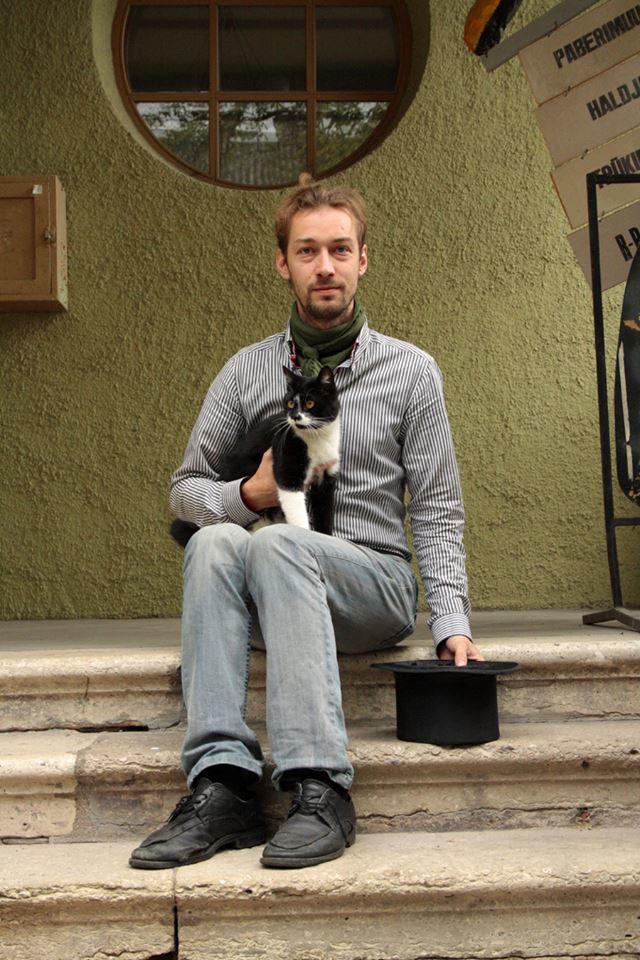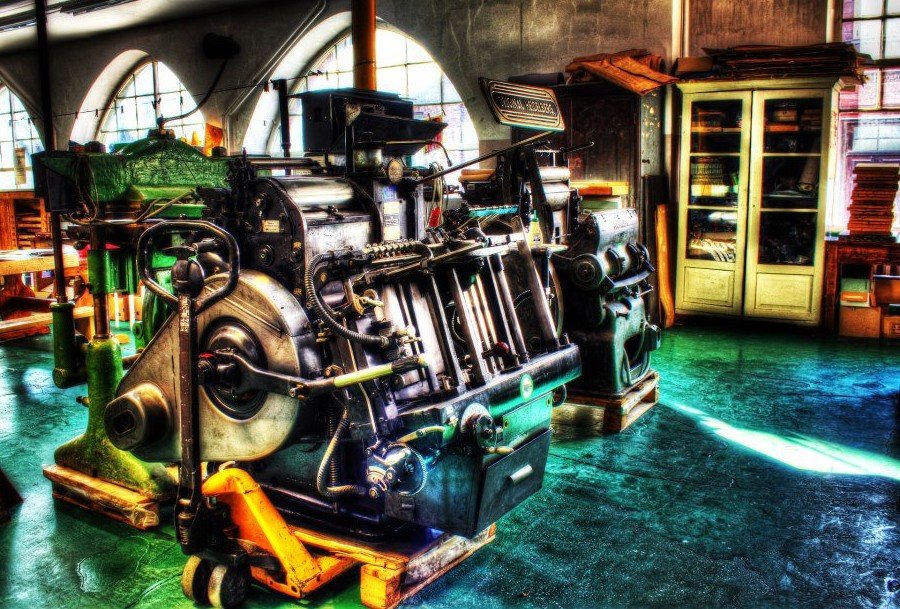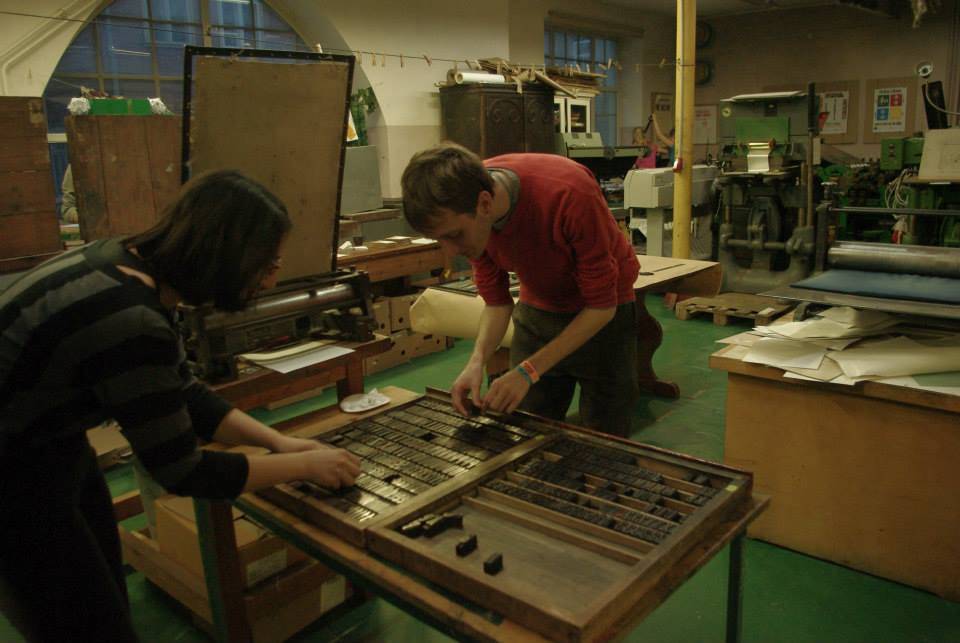The beginning of the Tartu Printing Museum defined its whole subsequent existence. It all started as a poetic story with elements of suspense.
One day Lemmit Kaplinski, the museum’s founder and one of the main movers and shakers of Tartu’s creative scene, happened upon an old printing press, which stood, sad and decorative, in Eduard Vilde Café. Kaplinski was thereupon hit by a lightning-like realisation that the press must be rescued and re-established in a new space – a space that would honour Estonia’s tradition of printmaking – and engage people of all ages in creative projects and general awesomeness.
 He and Madis Mikkor, a serial founder of cultural centres (chief among them the oldest independent centre Polymer in Tallinn) took the press apart, carefully documenting every step in the process. Just when they were ready to reassemble the press in its new home in a 1910 building on Kastani Street, Lemmit’s camera, which held the indispensable instructions, disappeared. Putting the machine together from scratch, Lemmit and Madis entered the world of printing the hard way.
He and Madis Mikkor, a serial founder of cultural centres (chief among them the oldest independent centre Polymer in Tallinn) took the press apart, carefully documenting every step in the process. Just when they were ready to reassemble the press in its new home in a 1910 building on Kastani Street, Lemmit’s camera, which held the indispensable instructions, disappeared. Putting the machine together from scratch, Lemmit and Madis entered the world of printing the hard way.
This is the first story that every newcomer hears from the founders of the museum. Since its beginning in 2010, the museum has grown to include a number of functioning printing presses and a huge collection of typefaces. It hosts regular open workshops and classes for people of all ages, teaching them to love hand-printing technology and to use it in innovative ways. Volunteers and artists-in-residence come to the museum from all over the world, plunging into the world of printing, transforming it and being transformed.
The museum is a whirlpool of countless creative projects. If you walk in on any given day, you’ll see Kristiina Sirkel turn discarded book covers into a one-of-a-kind Tartuensis notebook, Kalju Kütt helping easily distracted youngsters to create a poster for a school theatre production, and Johannes Gutenberg, the museum cat, eye the visitor with an air of dignity: self-important yet impossibly cute.
Even as you read this article, chances are that spectacular oddball events are being planned at the museum. Short films are being shot. New endeavours are discussed. Spontaneous parties and soulful conversations are happening. No wonder that the pull of the museum on Tartu’s permanent and temporary residents is irresistible. Casual visitors get hooked immediately and transform into wide-eyed, enthusiastic volunteers.
The museum’s atmosphere, disorienting in the best of ways, harkens back to the spirit of the early-twentieth century Noor-Eesti (Young Estonia) movement. This inspiration is reflected in the name Noor-Eesti Loomekeskus (Creative Centre Young Estonia), an organisation that facilitates joint events among the various other tenants of the museum building. At the Tartu Printing Museum, the fearless experimentation and creative euphoria of Estonia’s modernist poets and writers blazes up with a new passion.
I
Cover image by Mariliis Nõmme. Photos courtesy of Tartu Printing Museum.




